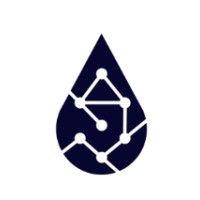Meet Our Featured Speakers
LEAK DETECTION
The next steps in the Smart Water Utility sector will be driven by advanced leak detection systems, AI-powered analytics, acoustic monitoring, satellite imaging, and the integration of open data platforms to improve network performance.
Show more
Water utilities worldwide are under growing pressure. The demand is rising; infrastructure is ageing, and water losses through leaks and bursts remain a critical challenge. Non-revenue water continues to be a persistent issue, requiring smarter and more modular solutions to address it. Automated monitoring, predictive analytics, and digital representations of water networks are now essential to ensure resilience and efficiency. In earlier years, utilities focused on SCADA systems, meters, and early digital monitoring technologies. Today, the sector is shifting towards more intelligent, integrated, and proactive approaches.
How Leak Detection Is Transforming Utilities
Leak detection technologies are no longer emerging; they are rapidly maturing and reshaping how utilities operate. AI-driven recommendations help identify anomalies across large water networks, while acoustic sensors and satellite-based tools can pinpoint leaks long before they become disruptive bursts. The emphasis is now on simplification and speed. Utilities need tools that cut detection times, improve operational efficiency, and shorten the period between identifying a leak and repairing it.
Leak detection technologies are no longer emerging; they are rapidly maturing and reshaping how utilities operate. AI-driven recommendations help identify anomalies across large water networks, while acoustic sensors and satellite-based tools can pinpoint leaks long before they turn into disruptive bursts. The emphasis is now on simplification and speed. Utilities need tools that cut detection times, improve operational efficiency, and shorten the period between identifying a leak and repairing it.
In parallel, the concept of the Digital Twin is gaining traction in water utilities. Networks are mapped in virtual space, allowing engineers to test new monitoring strategies, optimise leak detection programmes and simulate infrastructure responses before deploying changes in the real world. Software-based systems are replacing hardware-heavy solutions, with cloud-based control and data visualisation enabling utilities to operate more intelligently and efficiently. This interconnectedness also creates secure data spaces that can be shared across utilities, regulators, and service providers, laying the foundation for new business models based on performance benchmarking, predictive maintenance, and machine learning applications.
The Continuation of Smart Water Utilities
This new chapter in the Smart Water Utility journey is one of advanced applications and innovative possibilities. Utility companies can now mobilise sensors overnight, deploy mobile inspection teams guided by AI models and adjust operational flows dynamically based on real-time leak detection. The future lies in collaboration, with humans and machines working together to minimise water losses, safeguard critical infrastructure and deliver reliable services to communities.
Despite the challenges, the potential is enormous. Leak detection technologies are no longer merely tools; they are enablers of resilience, sustainability, and financial stability for water utilities. The story of European Smart Water Utilities 2026 is one of collaboration, innovations, and transformation. Stakeholders across the value chain, including utilities, service providers, technology firms, and regulators, now have a unique opportunity to build the next generation of smart, efficient, and secure water systems.
SUBSCRIBE FOR UPDATES
By submitting, you agree to receive email communications from the event organizers, including upcoming promotions and discounted tickets, news, and access to related events.













